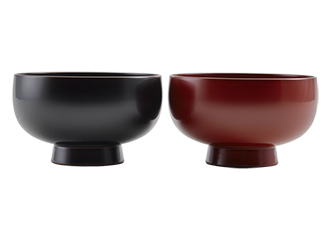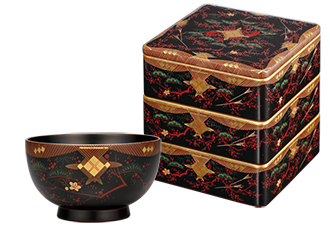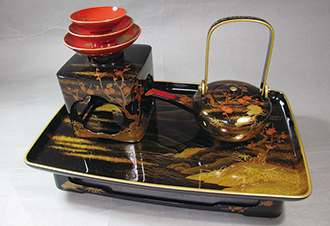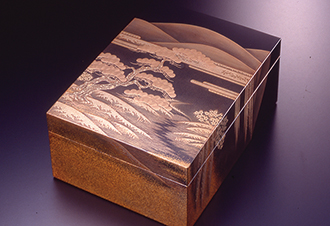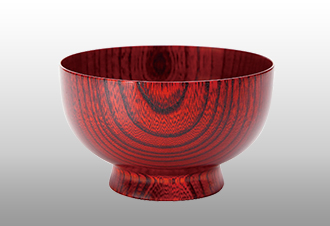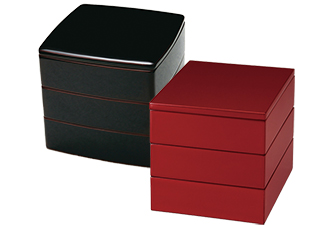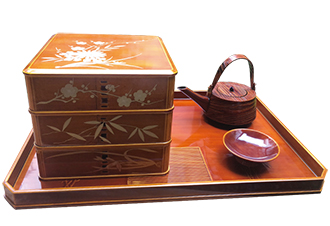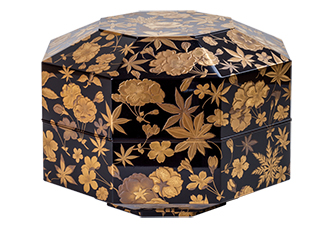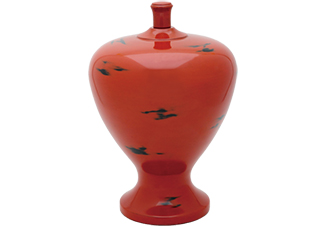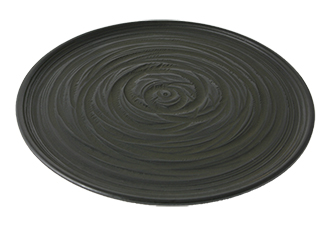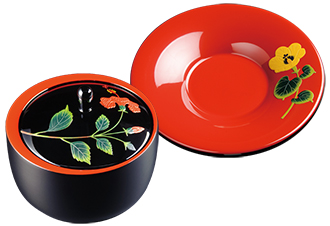niponica is a web magazine that introduces modern Japan to people all over the world.
2019 NO.25
Japan’s Decorative Art of Urushi

Various Shikki From Different Regions
Shikki spread initially from Kyoto to Edo and then nationwide. Here, we present examples of shikki crafted in various regions of Japan, each with its own distinctive characteristics in terms of appearance and technique.
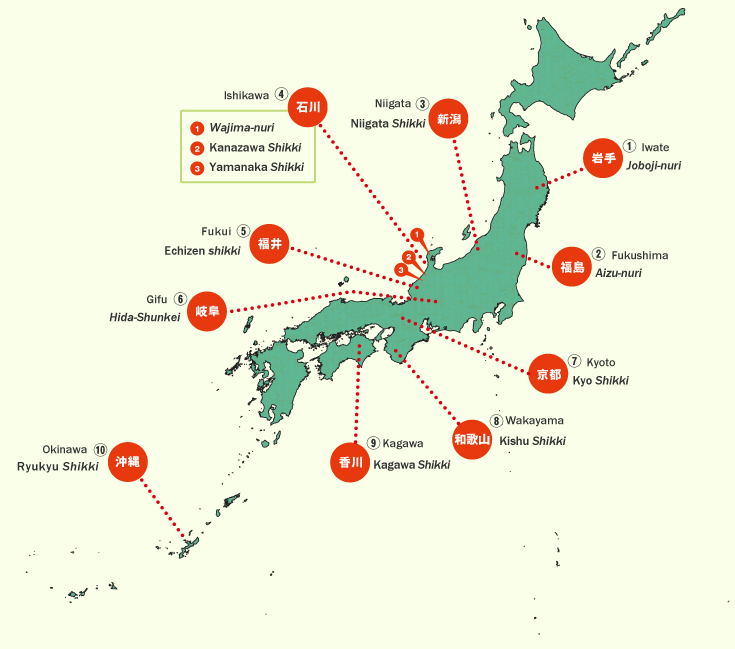
① Iwate
Joboji-nuri
The town of Joboji-machi is also well known for producing urushi, so this application technique is characterized by its minimalistic decoration, which allows the inherent beauty of the urushi to stand out.
(Photograph: Urushi Industry Division , Ninohe City, Iwate Prefecture)
② Fukushima
Aizu-nuri
Famous for its depictions of Aizu-e (designs from the Aizu area) which feature plum, bamboo, and pine trees, or spinning wheels – regarded as symbols of good luck in Japan - and the hamaya, a ceremonial arrow used to drive away evil spirits. Aizu-nuri also uses a wealth of other techniques.
(Photograph: Fukunishi Sohbei Shoten)
④ Ishikawa
This region boasts three areas that produce shikki: Yamanaka - notable for its wood base ; Wajima - known for the application technique; and Kanazawa - famous for its Maki-e technique.
1Wajima-nuri
In making the base, urushi is used to glue pieces of cloth onto fragile parts and the urushi is mixed with Wajima ji-no-ko (powdered diatomaceous earth containing vitreous microfossils and minerals) to create a robust form of shikki.
(Photograph: Wajimanuri no Tsuda)
⑤ Fukui
Echizen shikki
Extremely durable shikki - great for practical use. The urushi is applied neatly and quickly, giving a characteristic elegance with a deep, unique luster.
(Photograph: Echizen Lacquerware Cooperative)
⑦ Kyoto
Kyo Shikki
Handed down in its original form from the Heian period (around the 8th century), this shikki became popular with the spread of the tea ceremony and is known for its delicacy and the inner beauty. It is characterized by its refined and elegant design.
(Photograph: Kyoto Shikki Cooperative)
⑧ Wakayama
Kishu Shikki
Famous for a technique known as Negoro-nuri wherein a red urushi is applied over a base layer of black urushi and then the coated surface is gently ground (using charcoal or similar as an abrasive) so that small glimpses of the black base-coat can just be seen in places.
(Photograph: Kishu Lacquerware Cooperative)
⑨ Kagawa
Kagawa Shikki
Famous for its characteristic technique known as Zokoku-nuri in which the urushi is engraved with a small chisel to produce a lined pattern that creates unique shadows.
(Photograph: ICHIWADOU-KOUGEI CO., LTD)



